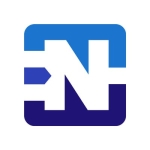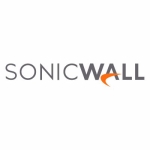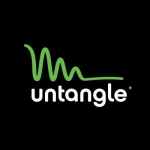How has it helped my organization?
It's hard to judge how much time it saves our organization because it's doing things you don't realize. For example, when it's blocking web advertisements, when it's blocking phishing, when it's blocking geolocation, the time it saves is because of the things you might have had to deal with that, now, you don't. Any time we have some kind of internet-related event, it's definitely going to take us hours worth of time. We have to do an investigation, we have to report on it, we have to write something up. By protecting our environment it probably saves our security analysts a fair number of hours during the week.
What is most valuable?
It's the brick wall that keeps us from the bad guys. It does a lot of things. In the beginning when you just have a firewall, of course, it's your NAT and it's your Access Control List. It's the thing that allows traffic in and out. There is some routing involved in that too. But once you add Firepower onto to it and you start enabling some of its features, you get some IDS/IPS involved with it and you can even do web filtering.
We used to do some web filtering on the Firepower but we moved into Umbrella once we started. We do use Firepower for one piece of web filtering because Umbrella has yet to provide it: advertisement blocking. We don't allow our end-users to go into advertisements. If they're going to go to a site, they have to know what the site is, not just try to hit some kind of Google ad to get to it because those can be dangerous.
What needs improvement?
In Firepower, there is an ability to search and dig into a search, which is nice. However, I'm not a super fan of the way it scrolls. If you want to look at something live, it's a lot different. You're almost waiting. With the ASDM, where it just flows, you can really see it. The second someone clicks something or does something, you'll see it. The refresh rate on the events in Firepower is not as smooth. It's definitely usable, though. You can get a lot of good information out of it.
It's hard to stay on the bleeding edge on firewalls because you have to be careful with how they integrate with Firepower. If you update one you have to update the other. They definitely have some documentation that says if you're at this version you can go to this version of Firepower, but you need to be careful with that.
For how long have I used the solution?
We've been using Firepower for two to three years.
What do I think about the stability of the solution?
It's pretty stable. There are times where I'll get an email saying a process has stopped. But a few seconds later, they'll say it restarted it on its own. It's hardy enough that if it is having problems, it's bringing things back up. For the most part, it's been very reliable.
It's been really good. And even so, if I've had to reboot the actual appliance, I'll bring it back up and it's good to go.
What do I think about the scalability of the solution?
We haven't hit that issue of scalability. We have increased the amount of traffic through it and it's handled it, but I think that's also a product of the ASA as well. If the ASA is going to choke, Firepower is going to choke as well.
We're going to be bringing in two new firewalls, as early as the fourth quarter or first quarter of 2020, and those are going to be pure FTD appliances. We'll probably be using those a little bit more extensively. I don't think we're going to be using the SSL portion, but we'll probably have the IDS/IPS, and we'll probably have the AMP turned on. That's because with the endpoints, we're not sure if we're going to be able to install an antivirus, so we can at least watch that. We'll probably use most of the suite on it.
How are customer service and support?
I've always liked Cisco support. We're a pretty big Cisco shop, so you're not going to hear a lot of complaints from me about support. And not only that, but if I do have a problem with Cisco support, we get ahold of somebody - our customer-success people and the salespeople from Cisco who are focused on our organization - and we get help. It's very good.
Sometimes, I'll have to contact the first tier of tech support. I'll still open up a case. But in case that, for whatever reason, is not going to our satisfaction, at least we have a chain of command we can go through and talk to some different people. We might get it escalated if we're just not getting something fixed on time. But Cisco has very top-notch support.
Which solution did I use previously and why did I switch?
We've been with Cisco and haven't had anything else yet. We haven't had a desire to move in a different direction. We've stayed with it because of how good it is.
We were initially introduced to Firepower by a consultant. At that time, it was for the web filtering because the web filtering we had was awful. We were using Sophos. Without getting too derogatory, it was just awful. There was no alerting and it was very hard to manage, whereas this is really easy to manage. With Cisco, it was very easy to set up content groups, to allow some users to get to some stuff and other users to not get to it. That's where it really started. There weren't any pros to Sophos that weren't in Firepower. We got rid of Sophos.
How was the initial setup?
Our organization is a big believer in training, So I attended a five-day class on this. From that, I was able to set it up pretty easily.
We have a virtual appliance. Once it actually installs and we set IPs and got some of the base set up, it was done within about a day. But the time it takes will depend. We're not an organization that has 10,000 users. We're probably a medium enterprise, of about 400+ users, rather than a large enterprise, so our ruleset is comparatively small. As a result, it didn't take me as long as it might for some, a total of two or three days, and that's even with fine-tuning. But because we're still using the ASA and the ASDM, we still have those rules in the firewall. We're not really at the FTD point where all the rules are in there. If we were, to migrate it would probably take some time.
For me, it was relatively simple because of the valuable training I had. There are some good resources online, don't get me wrong. It was just nice to be able to do something hands-on at a place, in training, and then come back and be able to do it.
The neat thing is that the gentleman who taught us, instead of just teaching us the material from a book or even, "This is how you can pass the Firepower test," taught us how he would go into a Fortune 100 and set up an organization. I had almost a step-by-step lesson on how to keep going through the configurations to get to a finished product.
With a firewall, you're always coming back to it to tweak it a little bit. You might find, "Oh, I'm not getting the logging a lot," or, "Oh boy, this rule is doing this, but maybe I want to tighten it down a little bit more." But to get the base configuration, to get the objects in, it takes about a couple of days. At that point, you can at least have traffic going through it. You may not be blocking anything, but you can be monitoring things.
What about the implementation team?
What was our ROI?
The return on investment would be the fact that I'm just not spending a lot of time either searching for things or trying to stop what's coming in and out of our network. The return on investment is the time I would have to spend during the day looking at things versus it proactively doing its job.
What's my experience with pricing, setup cost, and licensing?
We're going to get to a point, not this year and not the coming year, probably going into 2021, where we're going to want to replace the ASA appliances with either virtuals or actual physicals. But the Firepower series of appliances is not cheap.
I just got a quote recently for six firewalls that was in the range of over half-a-million dollars. That's what could push us to look to other vendors, if the price tag is just so up there. I'm using these words "fictitiously," but if it's going to be outlandish, as a customer, we would have to do our due diligence and look at other solutions at that point.
In addition to that cost, there are licensing fees for some of the individual things like AMP, the IPS/IDS piece. It depends on what you want to use, such as the SSL piece and the VPN piece, which we don't use.
Which other solutions did I evaluate?
We haven't evaluated any other options. The only thing that may ever force us in that direction would be cost. Only if the cost of the solution got so large would we have to look at something comparable.
What other advice do I have?
The neat part about this is how Cisco continues to evolve its product line and help us stay secure, while still doing our day-to-day business.
My advice would depend on how you want to use it. What are you looking for Firepower to do?
Firepower added features that, until we introduced into our environment, we could not have done. We probably could have added a third-party product but we would hate to keep doing all that. It's nice to be able to have our products from the same organization because then, if something's really wrong, we can talk to the same organization as we're trying to troubleshoot something through our environment. We use Cisco switches, Cisco routers, we use ISE, and Umbrella. We have a lot of products through Cisco.
We use the ACLs. We use the intrusion side, just to watch traffic. We have used the malware and have actually caught stuff in there. We do have a DNS policy so that at least we can check to make sure someone's not going to a bogus site; things can get blocked for that, but Umbrella is really good at what it does. We also have it connected to our Active Directory so I can see which users are going where, and that is valuable. But I can also see that in Umbrella, so there's some overlap.
For managing the solution it's me and at least one other person. I'm the primary resource on it.
We used to use AMP for endpoints through the Firepower but we decided to discontinue that. We have AMP on all our endpoints but with all the other things we have, such as Umbrella, we were satisfied enough with the security we have. We didn't want two different things possibly stopping files instead of having one console area to be able to see those kinds of things.
Overall, I would rate Firepower at eight out of ten. Every product can improve. But for what we're looking to do, it does a very good job.
Disclosure: PeerSpot contacted the reviewer to collect the review and to validate authenticity. The reviewer was referred by the vendor, but the review is not subject to editing or approval by the vendor.

















